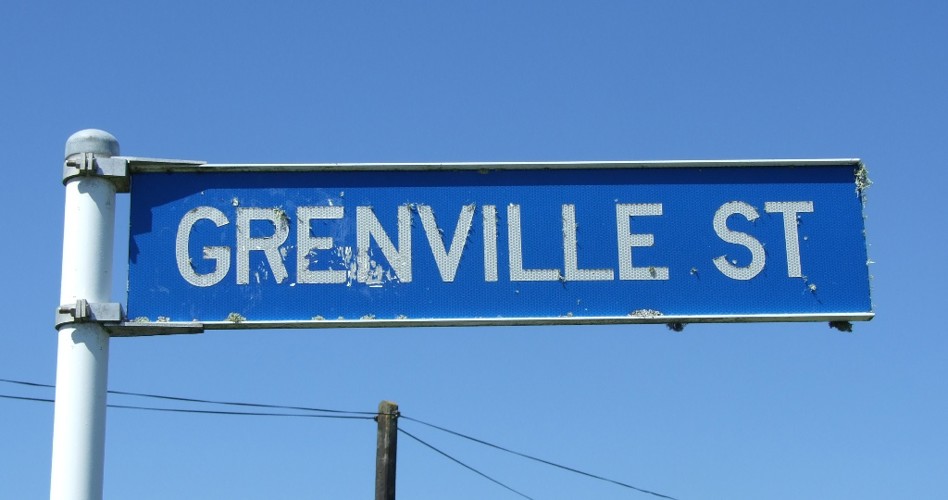 Grenville Street sign (2012). Mike Gooch. Word on the Street image collection.
Grenville Street sign (2012). Mike Gooch. Word on the Street image collection.
 Grenville Street sign (2012). Mike Gooch. Word on the Street image collection.
Grenville Street sign (2012). Mike Gooch. Word on the Street image collection.
New Plymouth's Grenville Street is named after the schooner HMS Grenville, which was purchased by the Royal Navy in 1763 so the sailor, surveyor, cartographer and explorer James Cook, could survey the eastern coast of Canada. Cook was given command of the vessel until 1767 during which time he made accurate surveys of the coast both on land and at sea. Each winter he returned to England to draw up and publish his charts, which continued in use until the early part of last century.
In August 1764 a powderhorn explosion damaged his hand while he was conducting the survey and the scars from this injury helped identify his remains after his death in Hawaii in 1779.
The Grenville was changed from a schooner to a brig in London before Cook returned to Canada in 1765 when he was directed to the south of Newfoundland. The vessel ran aground and needed repairs, meaning that particular season was over for him.
Cook's reputation grew after his observations of an eclipse of the sun visible in Newfoundland in 1766 were communicated to the Royal Society. Log books and journals for the Grenville during Cook's time in Canada are held at the National Archives in Kew, London.
This story was originally published in the Taranaki Daily News.
Please do not reproduce these images without permission from Puke Ariki.
Contact us for more information or you can order images online here.